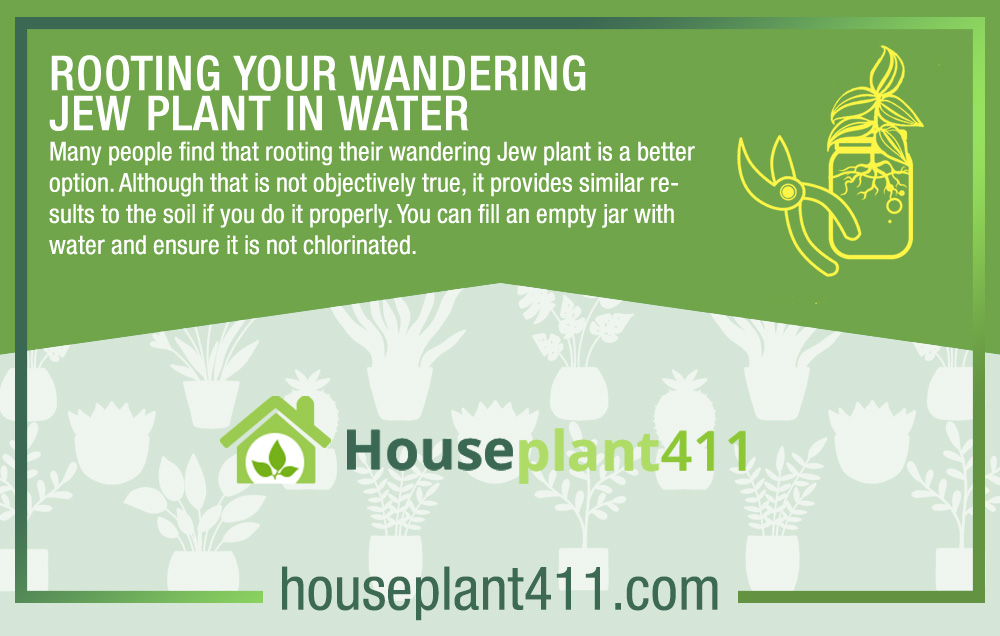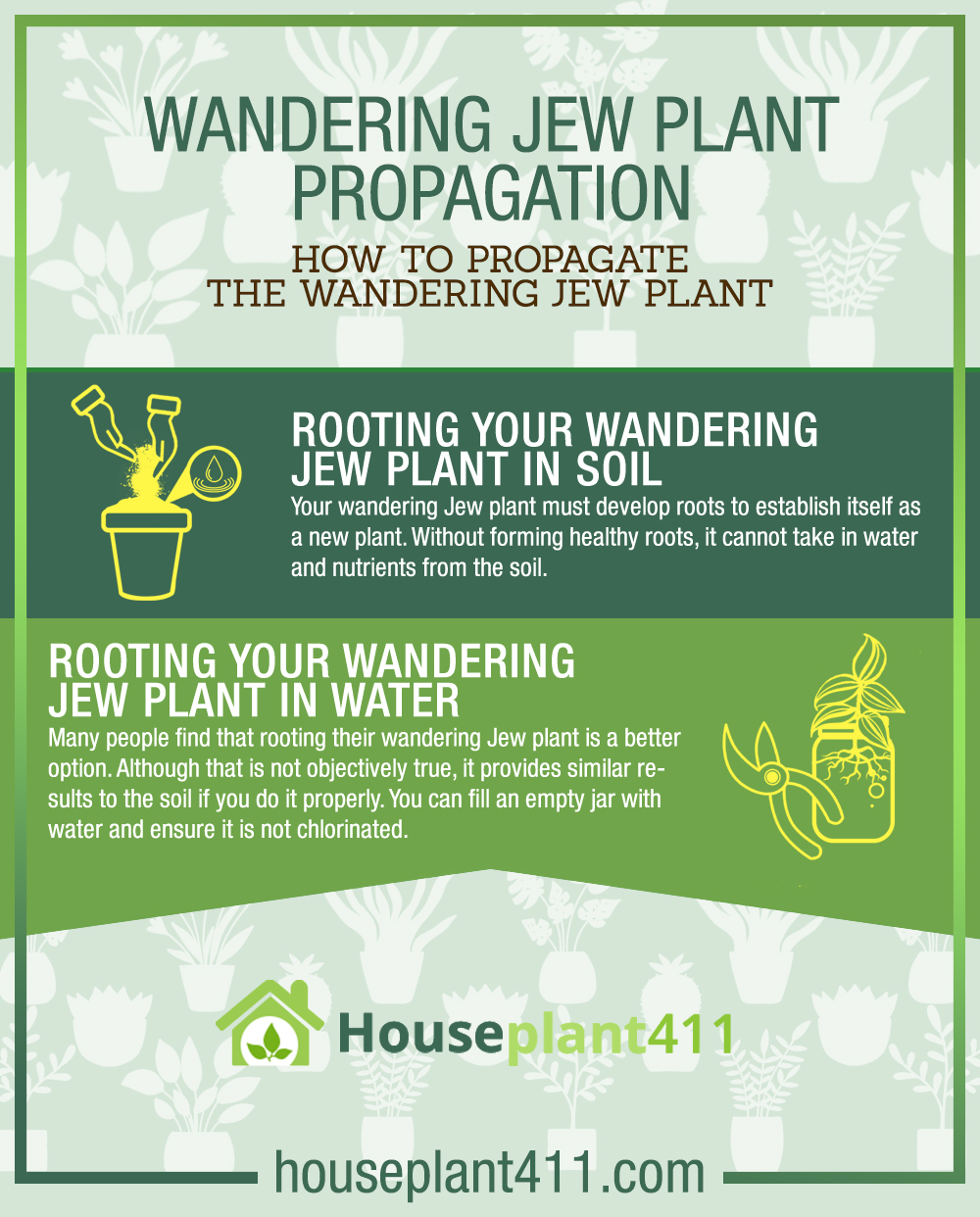The wandering Jew plant is an excellent addition to your home. Not only is it aesthetically pleasing with its purple leaves that blend well with the greenness, but it also requires low effort to grow. If you’re a plant enthusiast, you have likely heard of the wandering Jew plant and wish to propagate it in your home. Depending on where you’re growing your plant, whether it’s indoors or outdoors, you will require a different strategy.
Wanting to multiply your wandering Jew plant is understandable. You may have an indoor garden full of vibrant colors or wish to capitalize on the growing season. Either way, as long as you keep certain requirements in mind and trim your wandering Jew plants appropriately, you will notice results.
Let’s explore a complete guide to propagate your wandering Jew plant to ensure you have a house full of these beautiful plants.
How to Propagate the Wandering Jew Plant
Propagating your wandering Jew plant requires three main things. You need to know everything about how to root it in soil, take stem cuttings from the right places, and care for it properly. These feed into each other and cause propagation, meaning plant enthusiasts must optimize these aspects to grow their wandering Jew plant.
Taking stem cuttings from your wandering Jew plant is the best way to propagate it quickly. This process is also called pruning; you can use it on various plants to get the same results. Your wandering Jew plant will have growth nodes on the stem, indicating the best place to take stem cuttings.
You can use a sharp knife, scissors, or shear to cut directly below this growth node. The sterility of your cutting instruments is important because the stem may start to rot if you use a dirty shear. Once you’ve cut a stem off, you must ensure it grows roots quickly to establish the propagation process.
Another thing to keep in mind is the leaves. To facilitate the growing process, you must remove roughly two-thirds of the leaves below your cutting. Your best bet is to place the stem in soil or water so it develops roots and starts to grow quickly.
Rooting Your Wandering Jew Plant in Soil
Your wandering Jew plant must develop roots to establish itself as a new plant. Without forming healthy roots, it cannot take in water and nutrients from the soil. However, you can use the right soil mixture to make it as easy as possible for your wandering Jew plant to survive and thrive. Many plant enthusiasts know the benefits of choosing well-draining soil since excessive moisture can lead to root rot. If your newly developed roots begin rotting due to excessive moisture in the soil, your wandering Jew plant will quickly die.
However, the right soil moisture must be fairly damp. You can achieve this by soaking your soil in some water and separating any clumps that form. Once the soil absorbs the water, you can grab a handful and squeeze it to drain the water. After this process, the soil is ready to be used. You can add your mixture to a pot and break it apart as you put it in.
A pro tip is to add a propagation promoter that facilitates the growing process. Once the stem is in the soil, it will begin developing roots quickly. Although the promoter is not a strict requirement, it will fight off any bacteria and help your roots grow much faster than without it.

Rooting Your Wandering Jew Plant in Water
Many people find that rooting their wandering Jew plant is a better option. Although that is not objectively true, it provides similar results to the soil if you do it properly. You can fill an empty jar with water and ensure it is not chlorinated. Room temperate is perfect, and you can add your promoter to the water to create a healthy solution.
If you place your plant in the water following the pruning process, it will start to develop roots. However, you need to keep certain things in mind to facilitate your plant’s growth. For example, you should prevent your plant’s stem from touching the jar’s sides. This precaution minimizes the possibility of root rot, enabling your plant’s healthy development.

You should replace the water every three to four days for healthy root growth. Within a few days, your wandering Jew plant’s roots will grow to an appropriate size of two inches. Once this is achieved, you can create a soil mixture using well-draining soil and add your plant to it. Before you know it, your wandering Jew plant will start to grow from a seedling into a baby plant.

The Duration of the Rooting Process for Your Wandering Jew Plant
When propagating your wandering Jew plant, it is important to know the duration of the rooting process. You will get similar root growth results from adding your plant to soil or water, meaning you can choose either option. If you don’t use a promoter, achieving the same results might take a couple of extra days.
Typically, you can expect root growth to occur within a week. Your plant’s roots will grow significantly up to two inches in two weeks. This means you can add it to the right soil mixture to accelerate the propagation process. After 4-6 weeks, your plant will begin growing above the soil, indicating it is receiving the necessary nutrients for optimal propagation.
Where you place your wandering Jew plant in your home plays a part in its healthy growth and development. Wandering Jew plants grow well in brightly lit areas but should not be placed in direct sunlight, especially in the early stages. However, you can experiment by yourself and move your plant around to see what it responds to the best. Faster growth means you’re doing something right.
Final Verdict
Propagating your wandering Jew plant is quite a simple process. You need to prune it at the right place to begin the propagation process. You can then add your plant to an appropriate soil mixture or in water. If you want faster results, you can use a propagation promoter to help your plant develop roots more quickly. Caring for your wandering Jew plant as it grows is a separate topic and requires careful attention to some important factors. As long as you follow the propagation process laid out in this article properly, your wandering Jew plant will grow. Once it develops two-inch roots, you can add it to a pot containing the right soil mixture. Within a month or more, it will develop into a baby plant and become more resilient.

